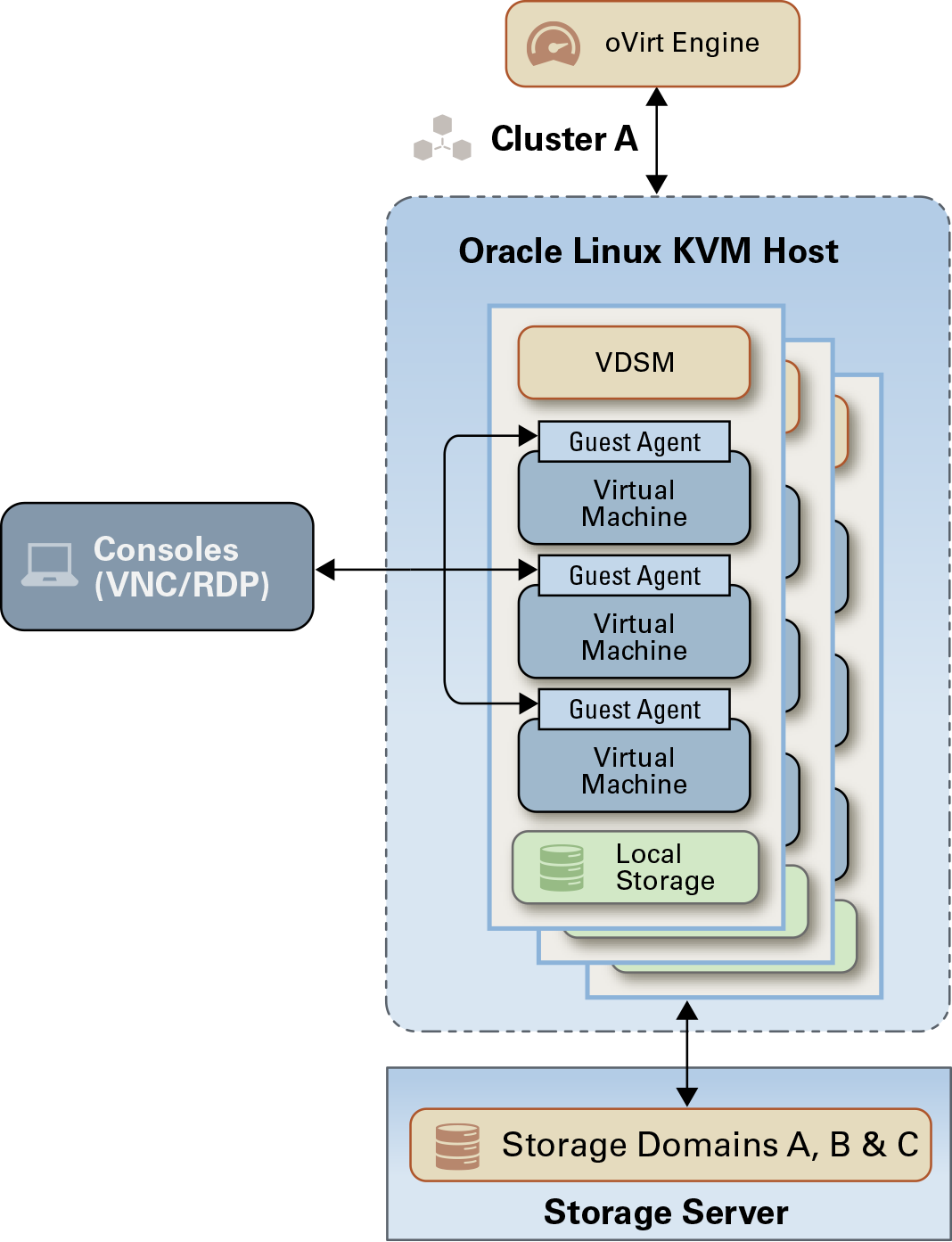Host Architecture
The engine runs on an Oracle Linux server and provides the administration tools for managing the Oracle Linux Virtualization Manager environment. Oracle Linux KVM hosts provide the compute resources for running virtual machines.
For more information, see Hosts.
Figure 2-2 Basic Host Architecture

- Kernel-based Virtual Machine (KVM) and Quick Emulator (QEMU)
-
As a loadable kernel module, KVM
-
provides full virtualization through the use of hardware extensions.
-
allows a host to make its physical hardware available to virtual machines.
-
runs in the kernel space and the virtual machines running on it run as individual QEMU processes in the user space.
QEMU enables KVM to become a complete hypervisor by emulating the hardware for the virtual machines, such as the CPU, memory, network, and disk devices.
KVM enables QEMU to execute code in the virtual machine directly on the host CPU. This allows a virtual machine's operating system direct access to the host's resources without any modification.
-
- Host Agent and libvirt
-
The Virtual Desktop and Server Manager (VDSM) service is a host agent that covers all functionality required by the engine for managing hosts, virtual machines, networks and storage. All communication between the engine and the KVM hosts is handled by the VDSM service that runs on the KVM hosts.
The libvirt daemon runs as a service (
libvirtd) on Oracle Linux KVM hosts and it provides an application programming interface (API) for managing various hypervisors, including Oracle Linux KVM. VDSM useslibvirtto manage the complete life cycle of virtual machines and their virtual devices on the host, and to collect statistics about them. - Guest Agent
-
The guest agent runs inside the virtual machine, and provides information on resource usage to the engine. Communication between the guest agent and engine is done over a virtualized serial connection.
The guest agent provides:
-
information, notifications, and actions between the engine and the guest.
-
the guest machine name, guest operating system, and other details to the engine, including associated IP addresses, installed applications, and network and RAM usage.
-
a single sign-on so an authenticated user to the engine does not need to authenticate again when connected to a virtual machine.
-
Figure 2-3 Agents, QEMU, and libvirt
